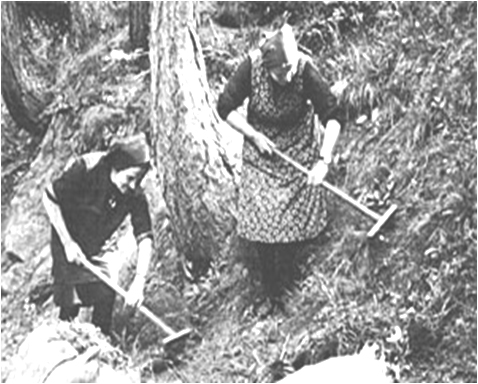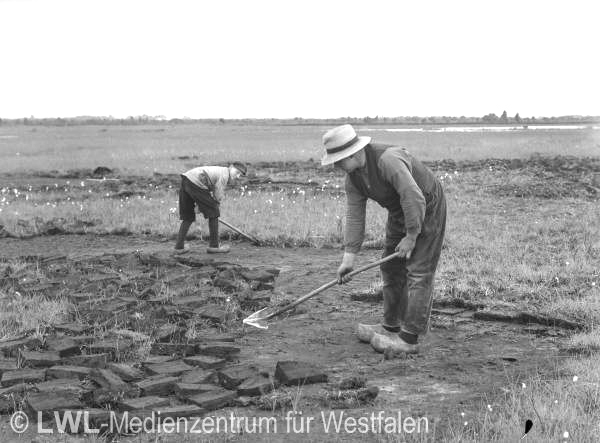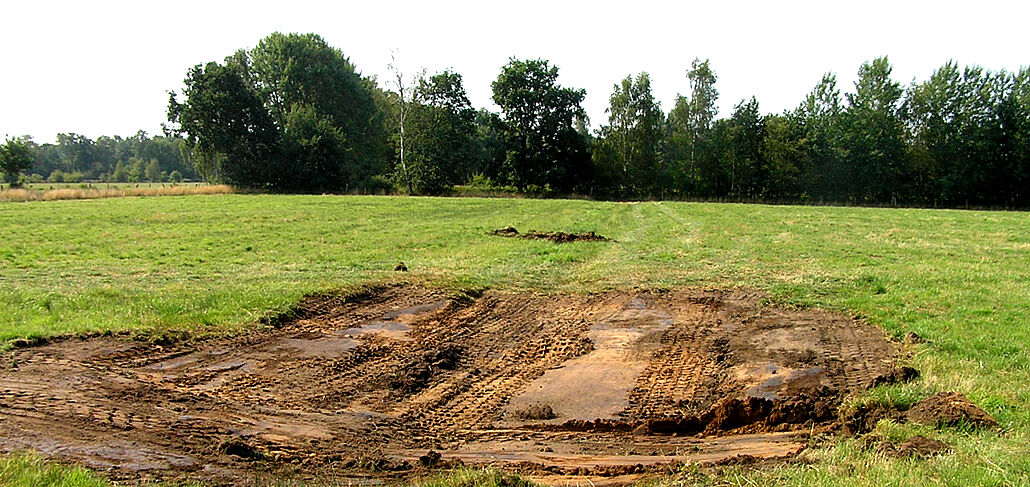In Central Europe, species protection is often not nature protection
Species protection is not the same as nature protection
Kunz, W. (2016): Species conservation in managed habitats - The myth of a pristine nature. Weinheim: Wiley-VCH, p. 1 - 273.
What actually is nature?:
Although humans are often referred to as “part of nature”, this expression is merely melodious, but does not stand up to critical scrutiny. Man cannot be part of nature. Quite the opposite: man is the opposite of nature. If man were part of nature, we would not need nature protection; because nature conservation means that nature must be protected from humans. If man did not separate himself from nature, then all destruction and destruction caused by man would be "natural" processes.
So nature is the opposite of man. Nature is that which has arisen “by itself” (i.e. without humans). What man has done is considered "artificial", and that is the opposite of "natural". When moles build heaps of earth in a meadow, that's nature. But when man digs up a field, it is not nature. A flower on a lawn has either settled there “by itself” (that means “naturally”), or it was planted there by humans; then it got there “artificially”. Medicines are either “natural products” or they have been synthetically manufactured by the pharmaceutical industry; then these are “artificial products”. Charles Darwin calls selection "natural selection" in the title of his famous book, in order to distinguish it from the "artificial selection" of the gardener and rancher.
Species protection and nature conservation often do not go together:
Link to the full video playback of this lecture on YouTube:
https://www.youtube.com/watch?v=NWArqSuL5C4
Link to the full video playback of this lecture on YouTube:
7024 Kunz, W.; Brosig, Z. T. (2021): Vergleich der Charakteristika der Lebensraumtypen der FFH-Richtlinie mit den Habitatbedürfnissen gefährdeter Tierarten. In: Naturschutz und Landschaftsplanung (in press).
Species protection and nature protection never really went together in Germany. The "Bund für Vogelschutz", founded in 1899, primarily pursued the goal of creating nesting boxes and bird feeders. That was species protection and not nature protection. In 1990 the soceity was renamed “Naturschutzbund Deutschland (NABU)” and a turnaround was initiated. Now it was about the preservation of an “intact nature”, by which a pristine nature was understood that should be shaped as little as possible by human intervention; e.g. spruce forests in West Germany should be replaced by tree species that are appropriate to their location. This is nature conservation, but not species protection. For example, the butterfly Erebia aethiops would be exterminated at its last place of occurrence in the Eifel if the pines (foreigners in this area) were removed in a "conservation-friendly manner".
In the seventies and eighties of the last century, nature conservation was ideologized. Horst Stern's popular television appearances conjured up an intact ecosystem and untouched nature as a kind of message of salvation. Horst Stern's opinion was particularly provocative for the awareness of nature at the time that we have too many red deer that destroy the forest because they eat the shoots of young, regrowing trees. Horst Stern was right about nature conservation. Species protection, however, sees exactly the opposite here: the deer clear the forest, and that benefits most species. So the species conservationist welcomes the "destruction of the forest" by the deer. Stern never dealt with this aspect.
Species protection and nature protection are particularly different in Central Europe. In Central Europe we cannot save many endangered species through nature conservation. This has the following cause: As a result of the Ice Ages, many of the native species in Central Europe became extinct because they could not move south due to the high mountains. When the ice masses receded, many endemic species that had once colonized Central Europe no longer existed. And those were mainly forest types. Instead, the empty spaces of Central Europe were populated by species from the open countries of the east and south after the last ice age. Many of the animal species living in Central Europe today are not native to Central Europe. They still have their core occurrence in other countries today. In Central Europe they have at most a peripheral occurrence. There are almost no endemic species in Central Europe. Most of our species have a migrant background. Not a single day butterfly is a really "German" butterfly; it is at most a butterfly that occurs (also) in Germany.
The postglacial re-colonization of Central Europe with species from the open countries of the east and south was made possible by the fact that humans intervened in the post-glacial reforestation through clearing, fires and cattle breeding as early as the Neolithic and thereby removed or thinned out the emerging forests. Larks, pipits, shrikes, buntings and most butterflies of Central Europe would not have immigrated if humans had not offered them their habitats by interfering with nature.
Most of the endangered species in Central Europe live in cultivated landscapes, not in near-natural forests - What the species need is protection through the use of habitats::
Until a few centuries ago, humans always used the forests in Central Europe and eliminated them in most places. That was good for many animal species. It was only because humans created some new biotopes in Central Europe that many of the species found here today were able to immigrate. Skylarks are steppe birds that live here on meadows and arable land; Crested larks are semi-desert birds that live here on railway tracks and industrial wasteland; Golden plovers are birds of the northern fells that were able to immigrate to north-central Europe because grass and heather areas were created by sheep grazing and because the raised bogs were drained and dry areas were created as a result; Black grouse live in the mountains at the tree line or high in the north and immigrated when humans in Central Europe created suitable biotopes through deforestation and bog drainage. Almost all habitats that are inhabited by orchids in Central Europe are locations where humans have prevented the natural development of vegetation.
In almost all parts of the world butterflies are typical forest species, steppes and savannas do not have many species. In Central Europe it is exactly the opposite (most butterflies are not in the forest, but in the open country), a testament to the fact that most of Central Europe's species are not adapted to the biotopes that would arise here if nature were left to its own devices. Then forests would emerge almost everywhere in which the majority of Central Europe's species cannot live. Therefore, measures such as "process protection" or "let nature be nature" are measures to preserve nature, but not to preserve many endangered Central European species.
Process protection is one of the goals of the National Strategy for Biological Diversity (Federal Ministry for the Environment, Nature Conservation and Nuclear Safety 2007). According to this, the proportion of forests with natural forest development should amount to 5% of the forest area by 2020. In biosphere reserves, 3% of the area should develop "naturally". Behind these objectives is the (unproven) expectation that natural forest development would increase biological diversity.
The fostering of oak in cultivated forests (for pig fattening) in Central Europe, which goes back thousands of years, has created a biotope of rich biodiversity in the hardwood floodplain forests, for example. This biodiversity has been shown to have decreased since process protection became mandatory. Process protection partially prohibits forest interventions. This prohibition has led to the densification of the forests, so that natural regeneration of the English oak is hardly possible due to the lack of light. The oak disappears from the oak-rich hardwood forests as a result of process protection.
The biodiversity of Central Europe had reached its peak around 200 years ago, when Central Europe was only sparsely forested. In earlier millennia, the biodiversity was significantly lower than in the nineteenth century, and it is currently reaching a low point again, not least as a result of the strong increase in dense grass, bush and forest cover in our landscape.
_________________________________________________________________________________________________________________________________________________________________________________________________________________
The landscape of earlier centuries:
Many people do not know how the landscape in Germany looked in earlier centuries. They long for the forest and often equate the term nature with forest. The desire for wilderness and the appreciation of forest national parks are very popular. But this mindset ignores species protection.
Since the second half of the nineteenth century, our entire landscape throughout Germany has assumed a structure that has never existed for centuries (perhaps even since the end of the Ice Age). Sand dune landscapes, heaths and wide scree areas have disappeared, such as parts of the Thuringian Basin two centuries ago (where the Little Bustard brood) or a hundred years ago the Lechfeld south of Augsburg (where the Gull-Billed Tern brooded). Moors, wetlands and muddy areas (where the Great Snipe brooded) were destroyed by afforestation. The landscape has been changed in a direction that does not meet the needs of many endangered species.
Hen Harriers breed today in Central Europe almost exclusively in the sand dunes on the North Sea islands. In earlier centuries they brooded in many places in inland Germany. This shows that there were landscapes with sand dunes in inland Germany in earlier centuries. The city of Celle was threatened by shifting dunes.
__________________________________________________________________________________________________________________________________________________________
Target species protection through the creation of suitable habitats - The species conservationist of the future is the farmer:
Kunz, W. (2020): Jeder Gemeinde ihr Biotop. In: Der Umstädter März-Mai, S. 32–34.
The future of species protection in Central Europe will not lie in nature conservation, but in the creation of suitable habitats for selected target species.
MacDonald, Benedict (2019): Rebirding. Rewilding Britain and its birds. Exeter UK: Pelagic Publishing (Pelagic monographs).
The homeland of many threatened species in Germany used to be the fields, meadows and pastures and the heaths and mountain slopes populated by sheep and goats. These habitats have become densely overgrown areas as a result of the intensification of agriculture or the cessation of cultivation and, above all, unrestrained afforestation and thus become uninhabitable for most open land species.
Some of these species were not saved by nature reserves, but by raw material extraction areas (lignite, gravel, quartz), military sites and industrial sites. There are currently more hobby ornithologists (“birder”) present on these areas than in the nature reserves. Instead of condemning these areas as "wounds in the landscape" or as "ghastly lunar landscapes", these areas should serve as an orientation aid for how species protection should look today.
It is an illusion to regain the lost lapwing, partridge or common snipe of the barren fields and wet meadows as breeding birds by extensifying agriculture. This could only be achieved if the grain fields were full of sand and weeds again, if the heaths were full of shifting dunes again, or if the meadows were again boggy, bumpy and interspersed with rushes. Landscape gardeners, farmers and foresters with their know-how and their technical equipment could imitate on designated special areas (which would have to be laid out next to the agricultural production areas) what raw material mining areas, military sites and industrial fallow land have shown us.
The future of species protection in Central Europe does not lie in “land sharing” (making agricultural areas species-friendly), but in “land-saving” (here the intensively used area for the yield, there the area designed by humans for the species to be protected). "Every farmer his biotope" should be the motto in future, in addition to the suggestion by Peter Berthold: "Every community their biotope".
For this we need space and money. But the planned extensification of agriculture and the fertilizer ordinance also cost money. Above all, there is a lack of understanding among the general public. The people want forest and many want wilderness. But wilderness in Central Europe does not bring us biodiversity. The desire for “wilderness” (or in the Bibelriether's sense: “let nature be nature”) is sought again and again as a high value, without ever justifying what wilderness is good for. “Wilderness” or “untouched nature” would first have to be justified as goals; otherwise they are purely human, subjective longings. The increase in the number of species would be such a justification. Habitat quality can only be defined in terms of species diversity.
The establishment of the Eifel National Park has not brought back any of the butterfly species that have disappeared or almost disappeared in the Eifel in recent decades: Boloria euphrosyne, B. selene, Melitaea athalia, Euphydryas aurinia, Lycaena hippothoe, Pseudophilotes baton, Polyommatus dorylas und P. bellargus have not returned . Butterflies do not need preservation of their habitats, they just need to establish them.








